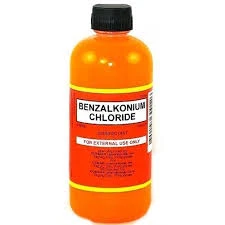isothiazolinone in detergent
Understanding Isothiazolinones in Detergents
In the realm of household cleaning products, detergents play a vital role in maintaining hygiene. Among the various components that contribute to the efficacy of these products, preservatives are critical in preventing the growth of bacteria, mold, and yeast. One type of chemical preservative widely used in detergents is isothiazolinones. This article aims to explore what isothiazolinones are, their function in detergents, potential concerns surrounding their use, and future implications for consumers and manufacturers.
What are Isothiazolinones?
Isothiazolinones are a class of heterocyclic compounds known for their antifungal and antibacterial properties. Common types of isothiazolinones include methylisothiazolinone (MIT) and chloromethylisothiazolinone (CMIT). They are typically used in low concentrations and can be found in a variety of products, ranging from industrial cleaners to personal care items. Their effectiveness as biocides makes them popular among manufacturers looking to extend the shelf life and stability of their products.
Role in Detergents
In the formulation of detergents, isothiazolinones serve a crucial purpose. They help prevent microbial contamination, which can occur during production, storage, and even after opening. By inhibiting the growth of harmful microorganisms, these preservatives ensure that products remain safe and effective for consumers. Most detergents, particularly those that are water-based, are susceptible to microbial growth due to their composition. This is where isothiazolinones come into play, helping to safeguard the integrity of the product.
Health and Environmental Concerns
isothiazolinone in detergent

Despite their benefits, the use of isothiazolinones has raised several health and environmental concerns. Research has indicated that some individuals may develop allergic reactions to these compounds, particularly those containing MIT. Symptoms can include skin irritation, rashes, and in severe cases, respiratory issues. This has led to increased scrutiny from health organizations and regulatory bodies regarding their use in consumer products.
Environmental concerns also arise from the potential toxicity of isothiazolinones. They can be harmful to aquatic life, leading to negative impacts when these substances enter wastewater systems. As such, their use is often regulated, and manufacturers are encouraged to seek more environmentally friendly alternatives or limit their concentrations in products.
Industry Response and Consumer Awareness
In response to the growing concerns over isothiazolinones, some manufacturers have started reformulating their products to reduce or eliminate these preservatives. This shift reflects a broader trend within the cleaning and personal care industries toward more sustainable and health-conscious formulations. For consumers, awareness of product ingredients has significantly increased, pushing them to seek safer and more environmentally friendly options.
Moreover, organizations and regulatory bodies are actively working on guidelines and regulations concerning the use of isothiazolinones. These efforts are aimed at balancing the need for effective preservatives with consumer safety and environmental health.
Conclusion
Isothiazolinones play a significant role in the formulation of detergents, providing essential protection against microbial growth. However, their potential health risks and environmental impact have led to heightened scrutiny from both consumers and regulatory bodies. As the cleaning product industry evolves, the trend towards safer and more sustainable alternatives will likely continue, benefiting consumers while ensuring effective product performance. For consumers, being informed about the ingredients in the products they use is crucial, enabling them to make choices that align with their health and environmental values. The future of detergents lies in innovation, reformulation, and a commitment to safety and sustainability.
-
Water Treatment with Flocculant Water TreatmentNewsJun.12,2025
-
Polymaleic AnhydrideNewsJun.12,2025
-
Polyaspartic AcidNewsJun.12,2025
-
Enhance Industrial Processes with IsothiazolinonesNewsJun.12,2025
-
Enhance Industrial Processes with PBTCA SolutionsNewsJun.12,2025
-
Dodecyldimethylbenzylammonium Chloride SolutionsNewsJun.12,2025





